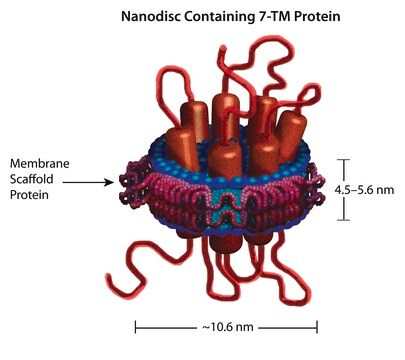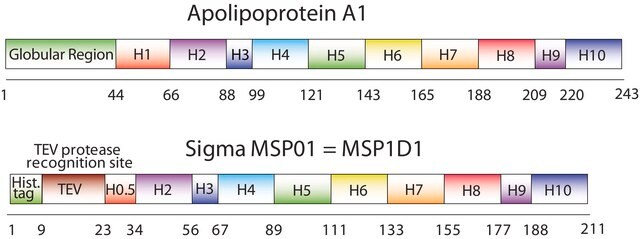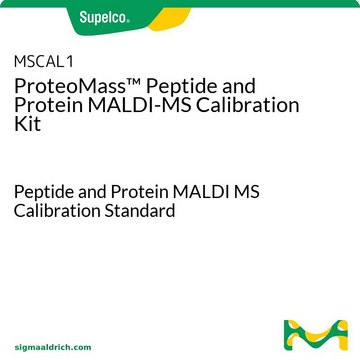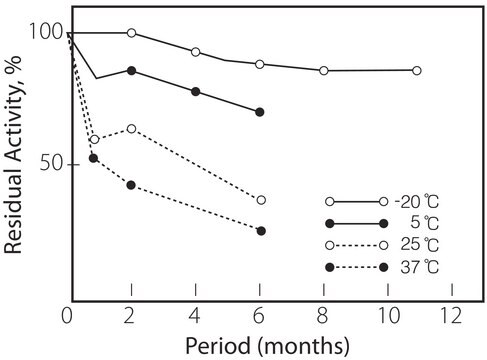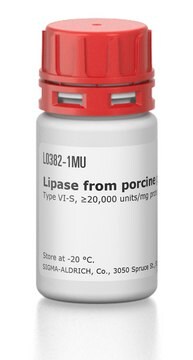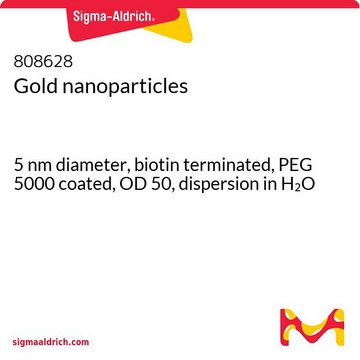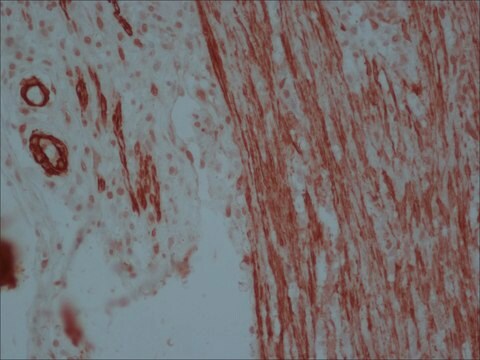MSP13
Białko rusztowania błonowego 1D1 BTN
recombinant, expressed in E. coli, Biotin labeled
Synonim(y):
Białko 1D1 BTN, Białko rusztowania 1D1 BTN, Rusztowanie białek błonowych
About This Item
Polecane produkty
rekombinowane
expressed in E. coli
Poziom jakości
Próba
≥90% (SDS-GE)
Formularz
buffered aqueous solution
masa cząsteczkowa
26,900.1 Da by calculation (without biotin)
rozpuszczalność
water: soluble
Warunki transportu
ambient
temp. przechowywania
−20°C
Opis ogólny
Pierwszy MSP, MSP1, został zaprojektowany z sekwencją opartą na sekwencji A-1, ale bez globularnej N-końcowej domeny natywnego A-1. Wariant MSP1 Membrane Scaffold Protein 1D1 (MSP1D1) usuwa pierwsze 11 aminokwasów w części Helix 1 (określanej jako "H0.5" na załączonym rysunku) oryginalnej sekwencji MSP1. Wariant MSP1D1 BTN zawiera enzymatycznie biotynylowaną dodatkową sekwencję 20 aminokwasów na C-końcu MSP1D1.
Technologia Nanodisc to podejście do rozpuszczania białek błonowych w roztworach wodnych w natywnym środowisku dwuwarstwowym, w którym białka błonowe pozostają stabilne i aktywne. Koncepcja Nanodisc wywodzi się z cząsteczek lipoprotein o wysokiej gęstości (HDL) i ich głównego składnika białkowego, apolipoproteiny. Nanodisc to niekowalencyjna struktura dwuwarstwy fosfolipidowej i białka rusztowania błonowego (MSP), genetycznie zmodyfikowanego białka, które naśladuje funkcję apolipoproteiny A-1 (ApoA-1)
Zastosowanie
Działania biochem./fizjol.
Informacje prawne
- 7,691,414 Białka rusztowania membranowego
- 7,662,410 Białka rusztowania membranowego i wbudowane białka membranowe
- 7,622,437 Kompozycje i metody czynników tkankowych
- 7,592,008 Białka rusztowania membranowego
- 7,575,763 Membranowe białka rusztowania i uwiązane białka membranowe
- 7,083,958 Białka rusztowania membranowego
- 7,048,949 Białka rusztowania membranowego
Kod klasy składowania
12 - Non Combustible Liquids
Klasa zagrożenia wodnego (WGK)
WGK 2
Temperatura zapłonu (°F)
Not applicable
Temperatura zapłonu (°C)
Not applicable
Wybierz jedną z najnowszych wersji:
Certyfikaty analizy (CoA)
Nie widzisz odpowiedniej wersji?
Jeśli potrzebujesz konkretnej wersji, możesz wyszukać konkretny certyfikat według numeru partii lub serii.
Masz już ten produkt?
Dokumenty związane z niedawno zakupionymi produktami zostały zamieszczone w Bibliotece dokumentów.
Klienci oglądali również te produkty
Protokoły
Protocols for Membrane Scaffold Proteins and Nanodisc Formation
Nasz zespół naukowców ma doświadczenie we wszystkich obszarach badań, w tym w naukach przyrodniczych, materiałoznawstwie, syntezie chemicznej, chromatografii, analityce i wielu innych dziedzinach.
Skontaktuj się z zespołem ds. pomocy technicznej

